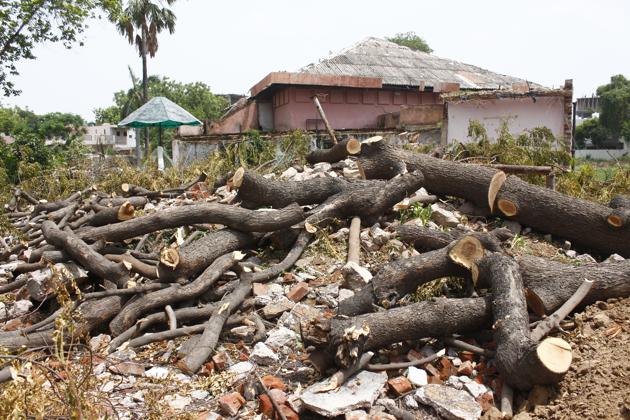No urban development project can justify wanton destruction of trees
Over the past five years, about 25,000 trees (the government records 9,000) have been felled in Gurugram.
“Jahan vikas hoga, wahan pedon ka vinash zaruri hai (where development takes place, destruction of trees is necessary). It is the law of nature.”

— Rao Narbir Singh, Haryana forest minister, Hindustan Times, 30 July 2018
The above statement was the minister’ s sharp response to ‘activists’ protesting against the proposed felling of 1,300 trees for the construction of a flyover and an underpass at the Atul Kataria Chowk. Over the past five years, about 25,000 trees (the government records 9,000) have been felled in Gurugram.
The minister also warned that more trees will face the axe — “New roads, flyovers, railways and other projects are coming up for which trees have to be removed,”he said.
This begs the following questions: Which ‘law of nature’ ordains trees be exterminated? Is such wanton destruction essential to the development of Gurugram, a city where citizens struggle to breathe? What will be the cost that the residents of Gurugram will have to bear for easing traffic jams? For how long will the purpose be served, as more and more vehicles ply the road? What does it say about our governance when the minister mandated to conserve forests advocates its destruction? The largescale felling of trees, the drying of water bodies, and the destruction of the Aravalis are polluting the city’s air and water, thereby affecting health and ultimately, impacting the economy.
Gurugram, in fact the whole of Delhi-NCR, ranks as one of the most polluted cities in the world. Rapid urbanisation, construction dust, vehicular fumes, burning of toxic wastes have made its air poisonous.
Levels of PM 2.5 — fine pollution particles linked to higher rates of chronic bronchitis, heart disease and lung cancer— fluctuate from poor to emergency levels. This is not just during Diwali or in the winters, but is now a year-round problem. Such severe pollution is a medical catastrophe — every third Indian dies prematurely due to poisonous air, and every third child in the capital has irreversible lung damage. It even retards brain development in kids.
The pollution load in this region is set to get worse. Gurugram has one of the highest vehicle densities in the country, at 232 cars and twowheelers per 1,000 people, far greater than Delhi’s 120, and the number is increasing rapidly.
Delhi-ncr also ranks as the world’s second largest urban sprawl — a vast continual construction project of malls, roads, flyovers, underpasses, roads, highways, flats etc. The ensuing waste and dust are dumped anywhere from the Yamuna to the Aravalis, which has served as a natural barrier against the eastward march of the desert. A 2017 report of the Wildlife Institute of India warns that such “denudation of the forests is advancing the desert with increasing intensity of dust storms.”
Haryana’s forest cover is less than four per cent against India’s 20 per cent, although the figure remains disputed. Gurugram’s forest cover is even lower at one to two per cent, as per a forest officer. There is less than a tree per person in Delhi-ncr, while we need oxygen worth eight trees in a lifetime.
The government advocates planting ‘a thousand trees instead of 100’. However, the notion that new plants will compensate for mature trees is a foolish one. The chances of survival of new saplings are low, at times just about 10 per cent. Native trees are rarely planted, while those which survive cannot perform the ecosystem services of mature trees or old growth forests, which serve as efficient scavengers of dust and pollutants. Studies show that wherever there is a high density of trees, the quantity of pollutants is much lower.
The government must wake up to its responsibility to ensure clean air, and a healthy environment, but it is the citizens of Gurugram who must hold their elected representatives accountable. Read on how you can get involved in the next and the last of this series on trees.
(Prerna Singh Bindra is a former member of the National Board for Wildlife. She is the author of The Vanishing: India’s Wildlife Crisis)
Stay updated with all the Breaking News and Latest News from Mumbai. Click here for comprehensive coverage of top Cities including Bengaluru, Delhi, Hyderabad, and more across India along with Stay informed on the latest happenings in World News.
Stay updated with all the Breaking News and Latest News from Mumbai. Click here for comprehensive coverage of top Cities including Bengaluru, Delhi, Hyderabad, and more across India along with Stay informed on the latest happenings in World News.






